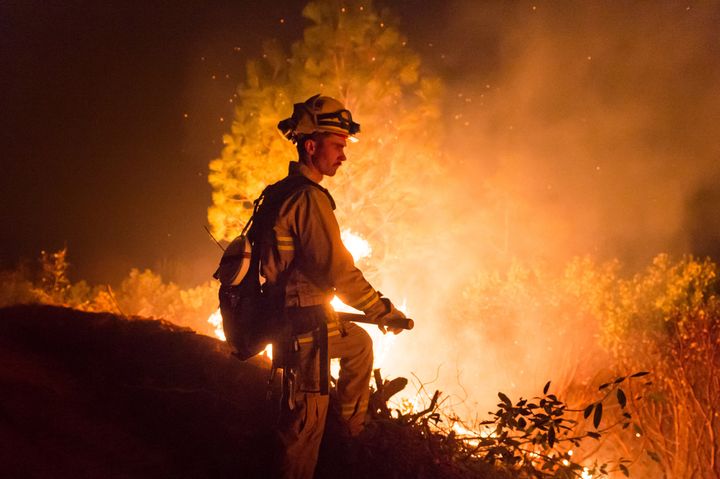
Wildfire is an integral part of the Earth system and has been for over 400m years. It is also an important and natural part of many of the world’s ecosystems. Indeed, some ecosystems, such as savannas, would not exist without fire – although others, such as the rainforests, cannot survive with wildfires and so work to maintain a damp climate.
We have evidence of controlled fire from more than 400,000 years ago. Over several thousand years, human populations have used fire to alter landscapes, hunt for food, and for comfort and to prepare food in the home. We have learned some control over fire and also how to respect it.
But over the past hundred years or so, there has been a major transition in how we view fire.
This change, coupled with climate change, is behind the current wildfire crisis engulfing mansions in Hollywood and threatening lives in major towns and cities, not only in California but across the world. Although this problem has been widely discussed in the scientific literature, many lessons remain to be learned by developers and residents living where wildfires are an environmental reality.
As towns and cities have become larger, fire has been excluded – and if it breaks out at all it is carefully controlled before it can spread. As a result, urban populations have lost their understanding of fire and fire has been demonised. This demonisation has become worse as urban dwellers blur the boundary between human habitation and wilderness, expanding into remote areas and, in many cases, into flammable vegetation.
We now face a situation in which all fires get rapidly extinguished when to let them burn may sometimes be the best option. This is because extinguishing fires in flammable landscapes can produce a build up of fuel, meaning future fires may be larger and more intense.
We need to learn about the biology of fire responses, which is key to recognising fire-dependent versus fire-sensitive plant species and ecosystems which exclude or cultivate fire. This is central to devising appropriate fire management systems and to deciding where we build.
The twin problems of flammable non-native invasive plants and climate change are posing a bigger challenge to fire policy across the world. Flammable plants are spreading into vegetation which is unable to recover from wildfires, such as in the Saguaro cactus (Carnegiea gigantea) areas of the southern US. As a result, this ecosystem may cease to exist within only 20-30 years.
In many cases – even in areas that burn regularly – non-native plants can cause significant problems, such as with cheatgrass (Bromus tectorum) in North America and Eucalyptus plantations in Portugal. Many of the non-native grasses were originally introduced into new areas as feed for cattle but have spread uncontrollably before it was appreciated that they were particularly flammable and could alter fire regimes.
The relationship of fire with the evolution of plants and animals is a long one and many have adapted to a fiery landscape. It has even been suggested that some plants encourage fire, by being more flammable but also by taking advantage of fire when it occurs by rapidly expanding in to the vacant space.
Where wildfire is a normal part of the landscape, such as in the western US, earlier spring snow melt and a longer dry – and hence, fire – season thanks to climate change have combined with the spread of invasive grasses and people building in this flammable landscape to produce more frequent and larger fires. Fire cannot be excluded from these landscapes and we must learn how to live in fiery environments.
We need to plan more carefully, not only regarding building materials, firebreaks and transport infrastructure, but also in how to maintain safe habitation in flammable landscapes. Attempts are being made to create fire-wise communities, but clearly we have some way to go and time is not on our side.
Even in the UK, we face considerable challenges with the changing climate. Surrey is the most wooded county in England with a large population and built environment. A small heathland fire could easily turn in to a much more significant crown fire, threatening people and property. In such places, we need to plan for fire even if fire is not yet an everyday occurrence.
Above all, we need to rethink fire . It has always been with us and will be on Earth when we are all long gone. We need to learn lessons from more than 400m years of fire on Earth if we are going to cope with fire in the future. We may kid ourselves that we can control fire, but wildfire is an ancient force that will easily escape our attempts to tame it.
This is an edited version of an article that first appeared in The Conversation
